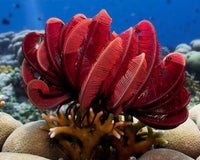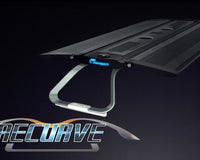Ask any marine hobbyist what she or he thinks is their most important item of equipment in their aquarium and you will get a variety of answers. One item which is sure to be at the top of the list is the protein skimmer as it is responsible for removing a lot of the waste sludge products from the your aquarium. Yet it is also an item of equipment which can cause a lot of frustration in getting it to work in just the way you want. I recognise its importance in keeping my aquarium clean and healthy and yet at times, when it chooses to misbehave it can be a real headache.
THE TRUE SCIENCE BEHIND PROTEIN SKIMMER
HOW DO PROTEIN SKIMMERS WORK?
A protein skimmer facilitates the process of foam formation by providing opportunities for the amphipathic molecules we want to remove from the water to bridge between a water and air interface and so create foam. By creating small bubbles in the skimmer we are encouraging foam formation which rises to the top of the skimmer where it can be collected.

One of the commonest is the venturi skimmer. A venturi is simply a constriction in a pipe through which a liquid flows. As water is drawn through the venturi it forces the water to move more quickly and its pressure decreases as a result. This causes air to be sucked in through a tube connected to a silencer situated above the water level. The air is then chopped into micro bubbles by the needle wheel impeller which rise upwards through the skimmer body. By the time the bubbles reach the top of the skimmer body, and are entering the collection cup, they should be forming foam comprising of much larger bubbles. As the bubbles burst a brown skimmate is formed in the collection cup which can be emptied regularly or drained into another collection vessel via a drain point if there is one. The greater the surface area of the bubbles, the more of these molecules can be removed from the water. There is an additional benefit provided by skimmers as they do a great job at aerating the water. The Large surface area provided by the bubbles ensures good gas exchange which helps maintain a more stable pH as well as ensuring that oxygen levels in the water are as saturated as possible.
HOW DO PROTEIN SKIMMERS WORK?
The list of what will be removed by protein skimmers is quiet extensive. These are mainly organic molecules, including amino acids, proteins, fats, carbohydrates, phosphates, fatty acids and phenols. Skimmers will also remove particulate matter present in the water, the fact that the skimmate which has been removed from your water is a dark yellow colour indicated that your water must be ‘whiter’ as a result. Nitrates and Nitrites are not directly removed through skimming however it is possible to remove trace elements of these.
MAINTENCE OF A PROTEIN SKIMMER.

Keeping a skimmer in good working order is a simple process. Regularly empty the collection cup and remove the build-up of sludge and debris on the neck of the skimmer. It really isn’t necessary to use any cleaning products because a sponge will do a great job on its own. Less frequently, perhaps every couple of months it is a good idea to totally strip down the skimmer and clean everything thoroughly. When choosing a skimmer, we recommend Deltec or Reef Octopus as we’ve tried and tested both with great results, presently both in use at our aquatic.





